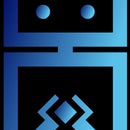Introduction: Gear Driver
Playing with gears can be lots of fun. Making a driver to see those gears turn can add to the fun. I will show you how I made wooden gears and a driver from scrap parts.
Entered in theEPILOG CONTEST VII
If I won the contest I would use the laser cutter to make cool gear gifts for the kids in my community. Tinker toys are what will inspire little ones to become great inventors. Laser cut projects on my to-do list include:
- Marble run with lights
- Gear clock
- Motorized Skateboard
- Ballerina box
- Doll house with sensors
- & more!
Step 1: Designing the Gears
I used GearGenerator software to design a set of gears.
- I set the diameters of both gears to 1cm.
- Larger gear to 18 teeth
- Small gear to 9 teeth
- About 6.5 cm shaft spacing
- After design was complete the gears were laser cut.
Total cut time 2-3 minutes using a Full Spectrum Laser Cutter
Step 2: Gear Base & Driver Base
Gear Base
After the gears were cut I needed a base to connect them. I used a piece of acrylic about 3x4 inches.
Other tools used include:
- Dremel
- Motor
- Card stock
- Glue
- Case (earbud case)
- Dowel 1cm, 1/16mm
- Power supply
MAKING THE BASE
You'll need a base to keep the gears meshed.I carefully drilled two small holes into the acrylic and gradually expanded the diameter with larger drill bits until they were both 1cm.Next I inserted the dowels, 1 to 2 cm in length is good.The base was then complete.
Step 3: Driver Assembly
For the driver I used a motor that was salvaged from an old printer. I needed a casing for the motor to minimize damage to the wires and for stability. I had an empty ear bud case that made a perfect enclosure. I used a permanent marker to outline the diameter of the motor and a Dremel to cut it out. I sanded the cut out circle to smooth the jagged edges.An additional hole was drilled in the lid of the ear bud casing for the small gear to poke through. Foam craft shapes from the DollarTree were used to accommodate motor diameter spacing and minimize vibrating. I used card stock to give the motor casing a nice DIY mechanical look. Finally four small holes were drilled in the bottom of the plastic casing. Four 3 inch dowels were inserted in the holes turning the enclosure into a upright stand. This completed the design for the gear driver.
Step 4: Gears in Action. Video
Watch the video to see this project in action. I am working on a marble run kit for the driver, check back to see what I come up with next.
Design expected to include but not limited to:
- Magnets
- Leds
- Buzzers
- Hall effect sensors
- 7 segment display
Thanks for checking out my wooden gears & driver.

Participated in the
Epilog Contest VII













